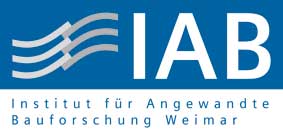Feasibility study of the IAB Weimar
In a feasibility study, IAB Weimar used simulations to investigate the extension of the district heating network to the inner-city station district of the city of Gotha in Thuringia.

Gotha has two district heating networks (West and Siebleben) with a total of 9,500 connected residential units and an annual heating demand of 77 GWh/a.
The station district is located between the two supply areas and has a theoretical potential of about 30-35 GWh / a, with a 50% connection rate was expected in the final construction.
Various variants have been developed to ensure the district heating supply of the station’s headquarters. In addition to the line expansion, investigations should particularly focus on the use of renewable energy sources (solar thermal energy, a large buffer storage and geothermal energy) and CHP technologies. Also the effect of different connection rates in the supply area was considered.
TOP-Energy® was used to simulate the different supply scenarios and the associated sensitivity analyses.
Feasibility study on district heating supply for Gotha railway station district approved: Source: Gotha public utility authority
Title: Energetic district concept for the extension of the district heating supply in the municipality of Gotha
Speaker: Florian Zunkel
